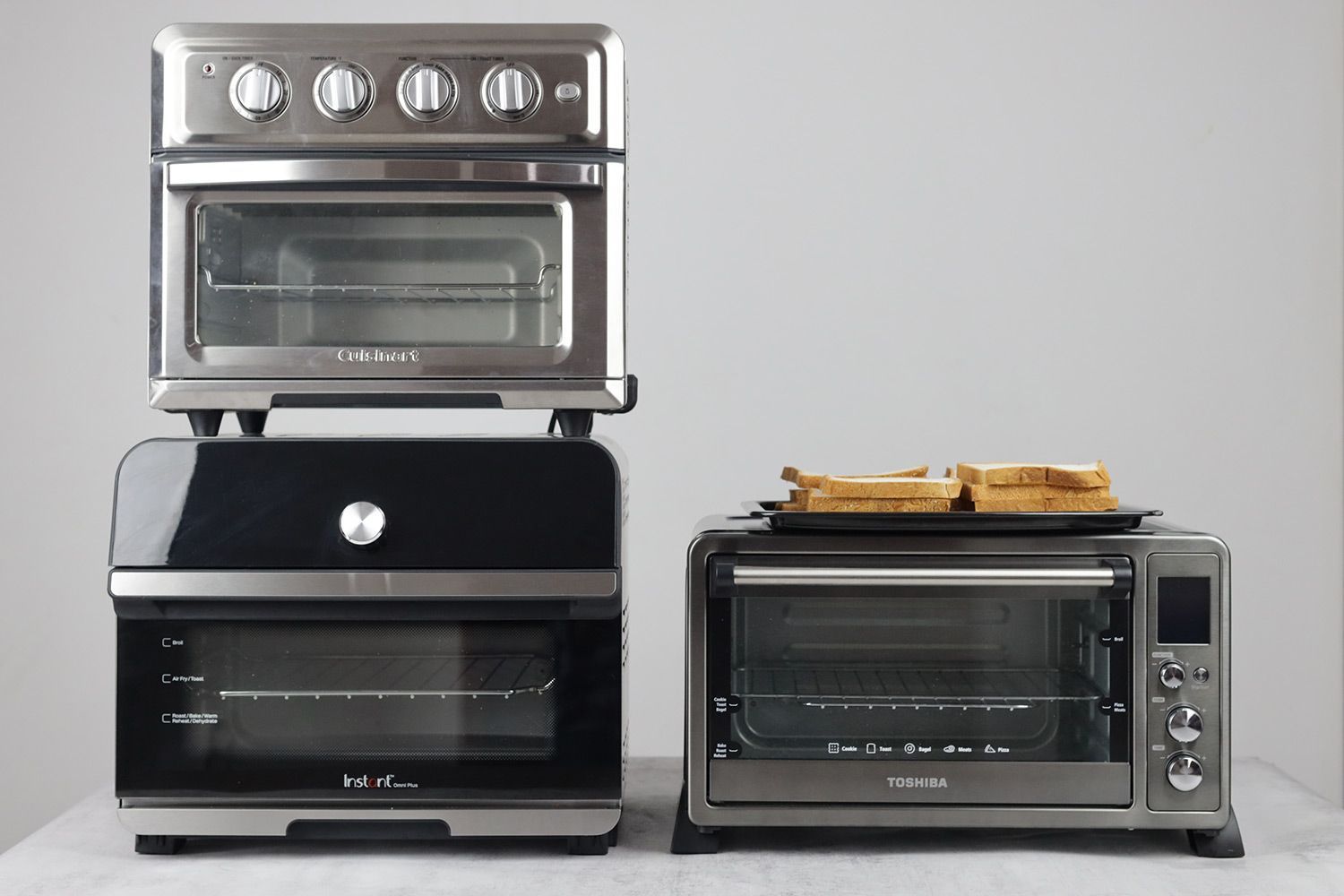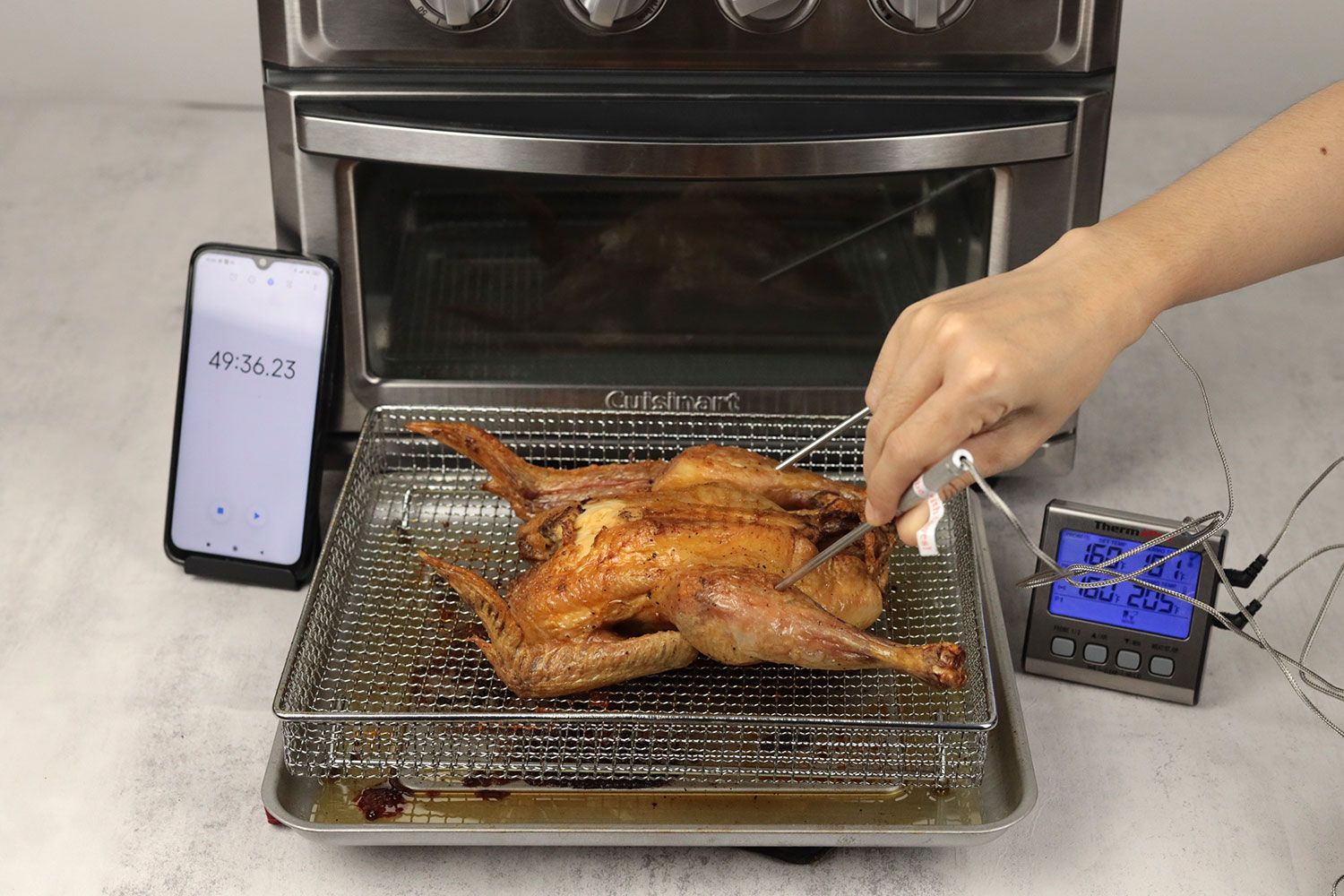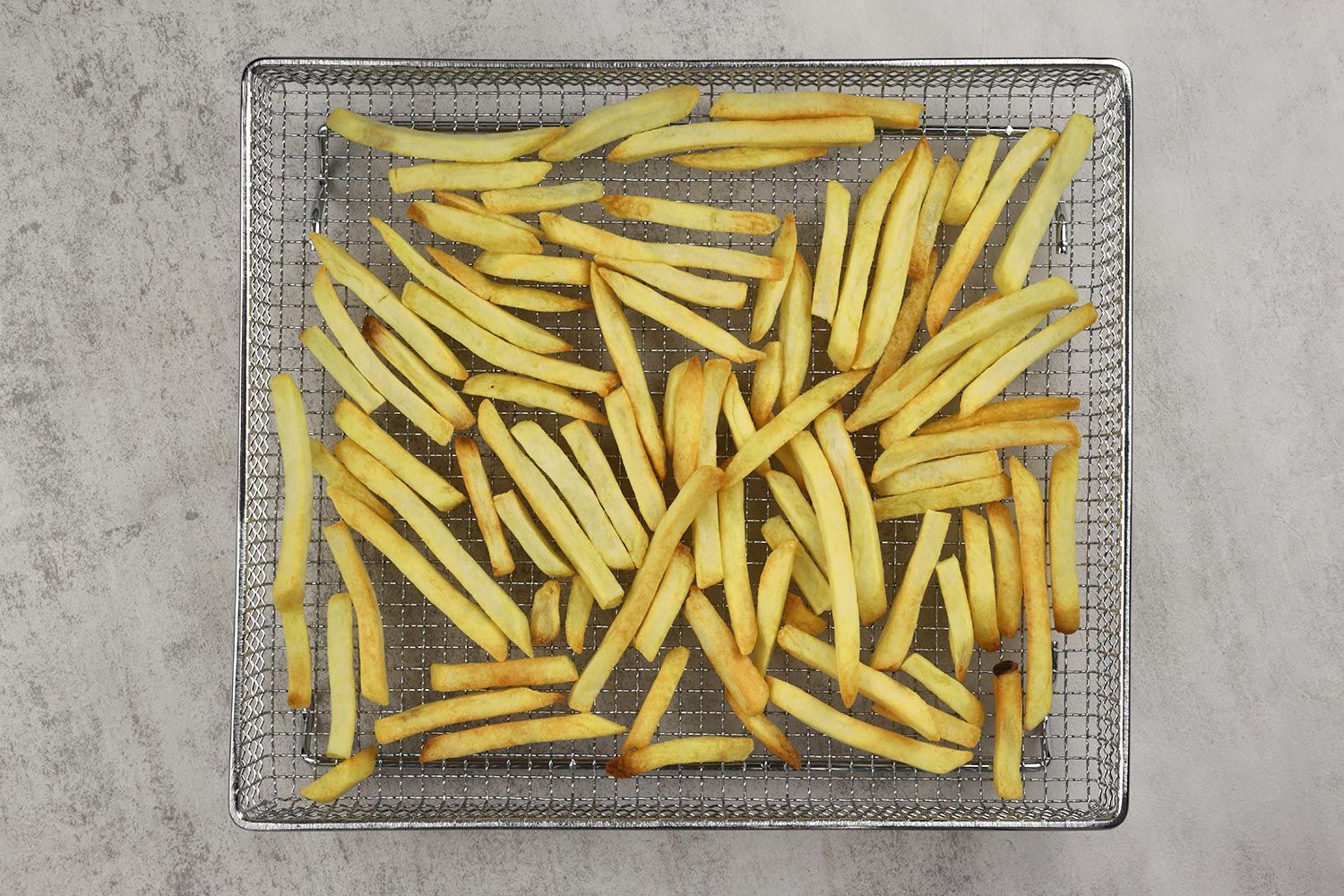Our recommendations are made independently. We may receive commissions from purchases made via our links.
Pizza for Toaster Ovens
Check out how we test toaster ovens for baking pizza. Choose the best toaster oven for the perfect crust and pizza toppings within 5 minutes.
This test is part of How We Tested Our Toaster Ovens v1.0
Pizza is one of the most common food items in the world. So it’s safe to say that the ability to produce a good one is a crucial feature for toaster ovens. Thus, the result of the baking pizza test takes up 25% of our performance score for a toaster oven.
Our test determines if each toaster oven can bake a perfectly golden and crispy pizza with fully melted cheese on top. We also provide a comparison with other toaster ovens’ performances in baking pizza.
With this test, we hope to help you decide on the oven that best suits your pizza preference.
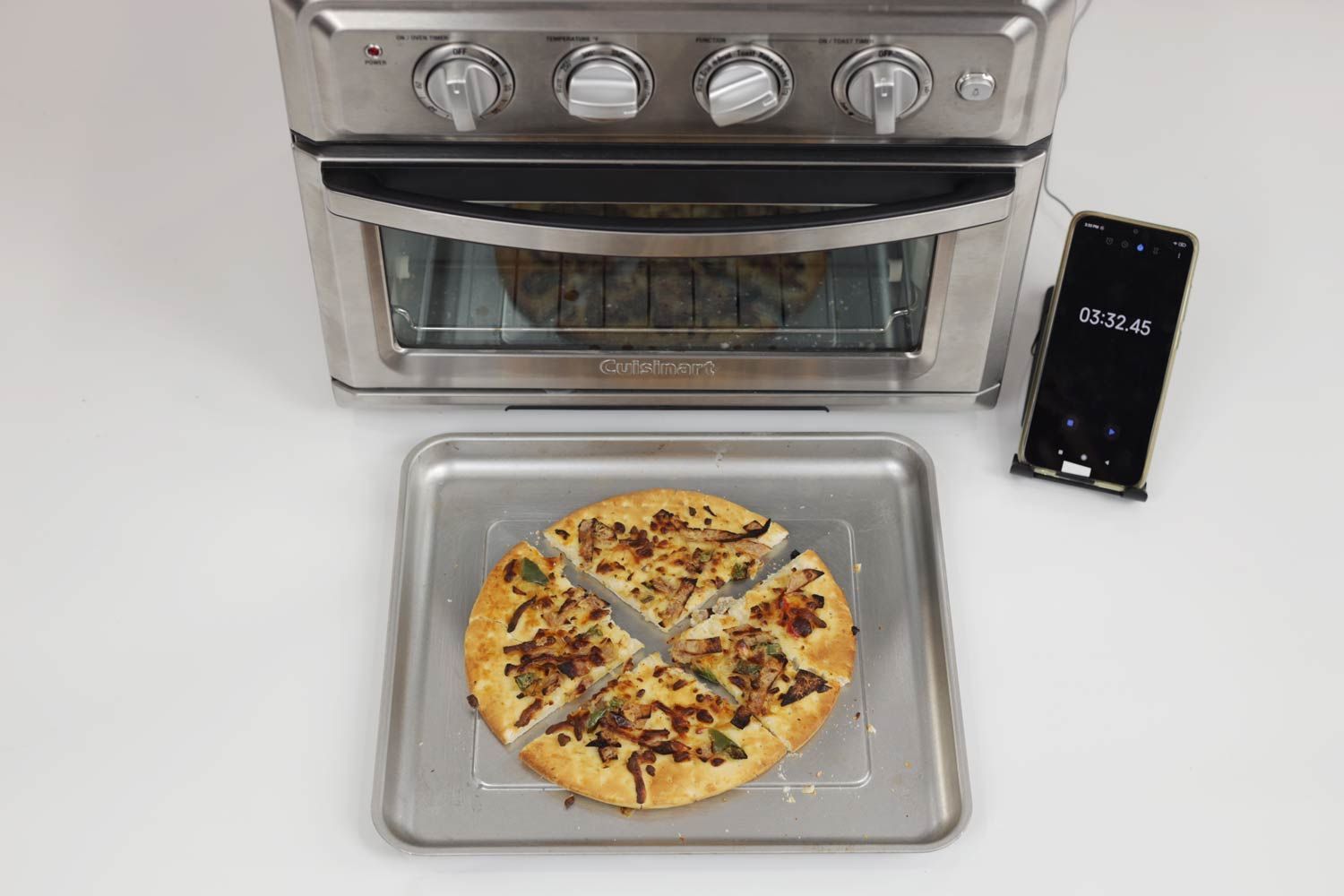
Prior to the Actual Test
First, we had to come up with a set of standards for our toaster oven baking pizza test. This ensured that the steps and results of our tests would be consistent and could be replicated reliably.
We chose to use store-bought frozen 9-inch thick-crust meat pizzas thawed to room temperature. Most toaster ovens (even in the small category) can fit a 9-inch pizza and large ones can even fit a 12-inch pizza.

According to our head chef Tuyet Pham, it’s ideal to bake pizza at 500°F for 8 to 12 minutes or at 550°F for 4 to 7 minutes. However, most household toaster ovens can’t reach that temperature.
Instead, we chose 450°F which is the most common highest oven temperature setting. If the oven could deploy convection baking, which was beneficial for savory dishes in general, we would deploy the most powerful setting.
We decided to bake the pizza until it turned the perfect color, then record the time. Since the temperature would be set in this instance, the cooking time would be a worthy variable in evaluating the performance.
We baked the pizza on a baking pan and not a baking rack or air frying basket to make sure the pizza stay flat and to avoid any debris or drippings on the cooking chamber’s floor.
We decided on 4 scoring factors which are the Cooking Time, Crust, Topping, and the Taste which we detail further below.
Testing Equipment
Smartphone timer: As timing is important, we measure the pizza baking time with a smartphone timer. If the toaster oven has a pizza function, we check if it matches the preset timer.
Oven thermometer: Temperature is another crucial factor so we use a thermometer to keep track of the oven’s internal temperature. Similar to cooking time, we also check if it matches the preset temperature of the pizza function if available.
Camera: We record all the testing procedures on camera.
Steps
- We place a thermometer inside the toaster oven and preheat for 20 minutes or until it reaches 450°F. We also use a phone timer when not provided by the oven.
- We place a store-bought frozen 9-inch thick-crust meat pizza at room temperature on the baking pan.
- After the baking’s done, we first record the cooking time, check the crust color, and meat caramelization, then take photos.
- We slice the pizza into equal pieces to check the doneness of the crust and take photos.
- We take photos of us breaking up a piece to showcase the melting cheese.
- We have a taste test with a group of four people including our head chef and finalize the score.
How We Score
We mentioned above that the pizza test takes up 25% of the performance score. Scoring factors are the Cooking Time (20%), Crust (20%), Toppings (30%), and the Taste (30%). Each factor and the overall score of the pizza test are shown on a scale of 0 to 10.
Cooking Time
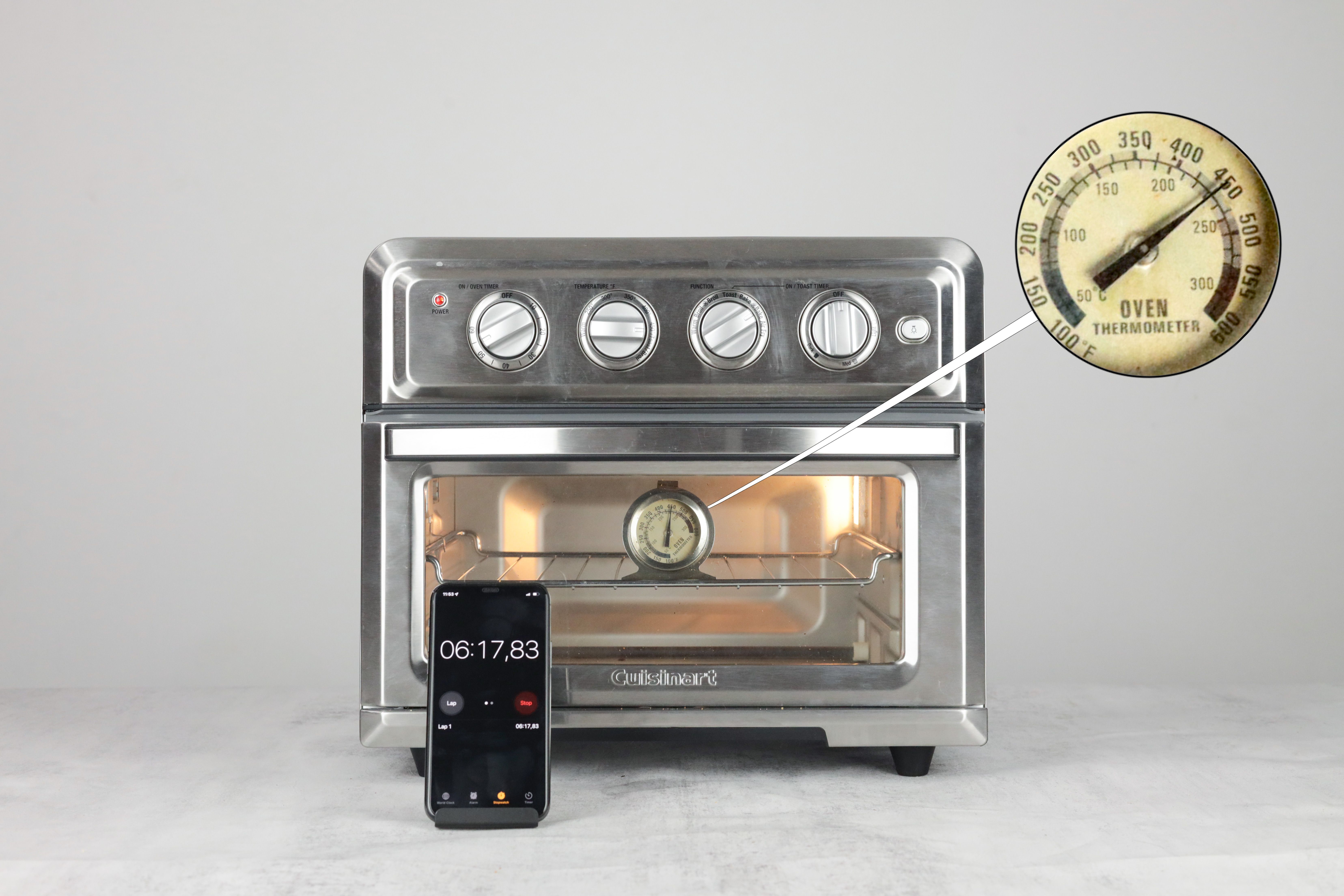
Most packaged 9-inch thick-crust pizzas recommend 10-15 minutes of baking after preheating the oven to 450°F. After performing a series of tests and consulting with our head chef, however, we deemed 10 minutes should be the time limit.
The preheat time to 450°F of a toaster oven is around 10-15 minutes depending on its performance. When combined with over 10 minutes of baking, it would be too long a time for household use. Not to mention, some toaster ovens can bake our test pizza in an incredible amount of time — under 5 minutes.
Therefore, any oven that took longer than 10 minutes to properly bake a 9-inch pizza would fail the cooking time component of our test. We also kept track of the pizza cooking time of each toaster oven. Then we compared them all together to devise a scoreboard.
- 10/10: ≤ 5 minutes
- 9/10: 6 minutes
- 8/10: 7 minutes
- 7/10: 8 minutes
- 6/10: 9 minutes
- 0/10: ≥ 10 minutes
Crust
For the crust, we first check the color of the surface on both the bottom and the top. We then slice the pizza to see the doneness of the crust.
- 10/10: 100% even golden color with a few charred spots; Cooked all the way through
- 9/10: 90% even golden color; Nicely cooked
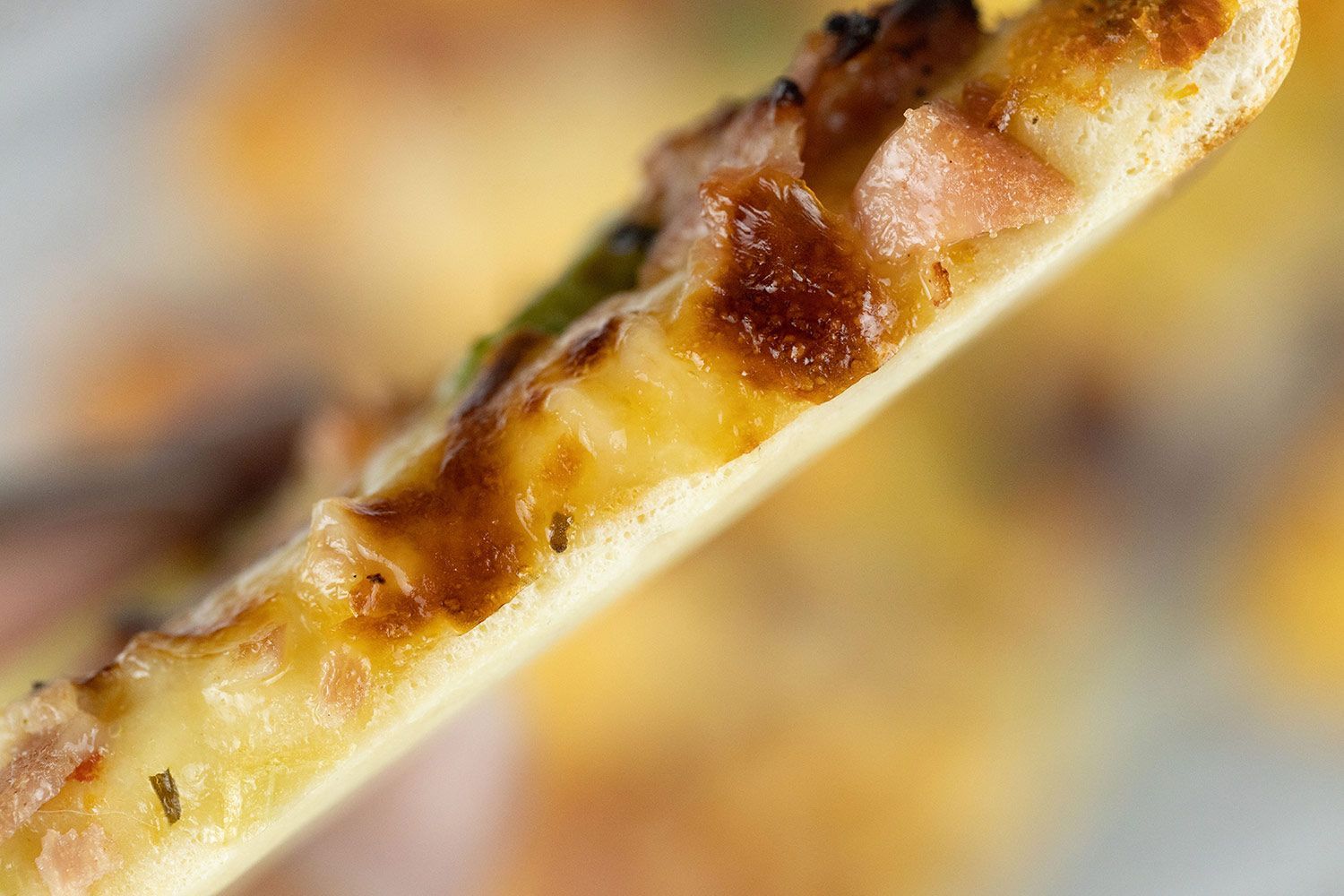
- 8/10: 80% even golden color; Nicely cooked
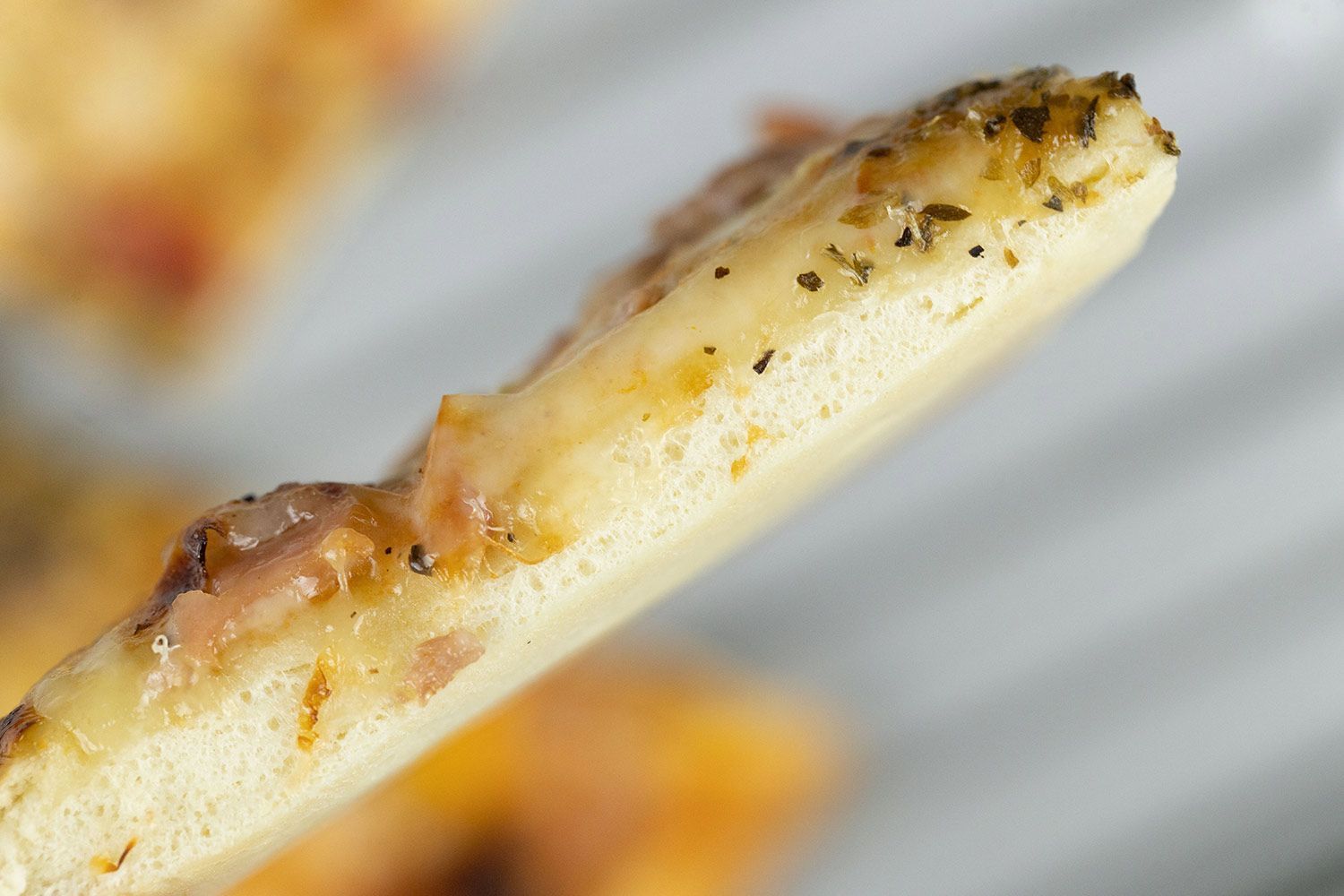
- 7/10: 70% even light color; A bit undercooked

- 6/10: 60% even light color; A bit undercooked
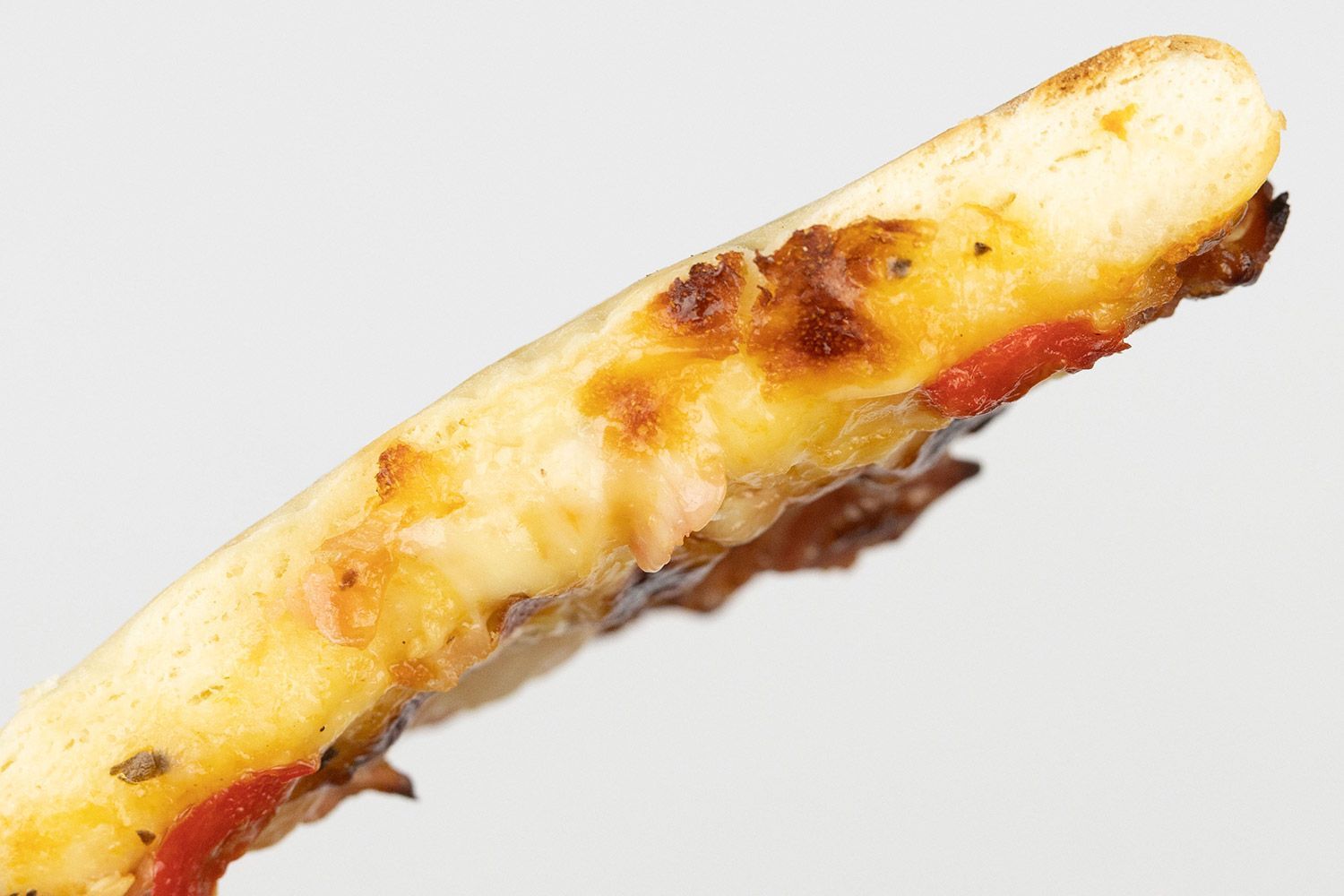
- 5/10: Almost no color; Too many burnt spots
- 0/10: Undercooked; No color; Burnt
Toppings
For the toppings, we check for the caramelization of the meat and the melting of the cheese. We break up a slice of the pizza to see if there are any beautiful strings of melted cheese.
- 10/10: 100% even, perfectly caramelized meat; Thoroughly melted cheese
- 9/10: 90% even, slightly caramelized meat; Partially melted cheese
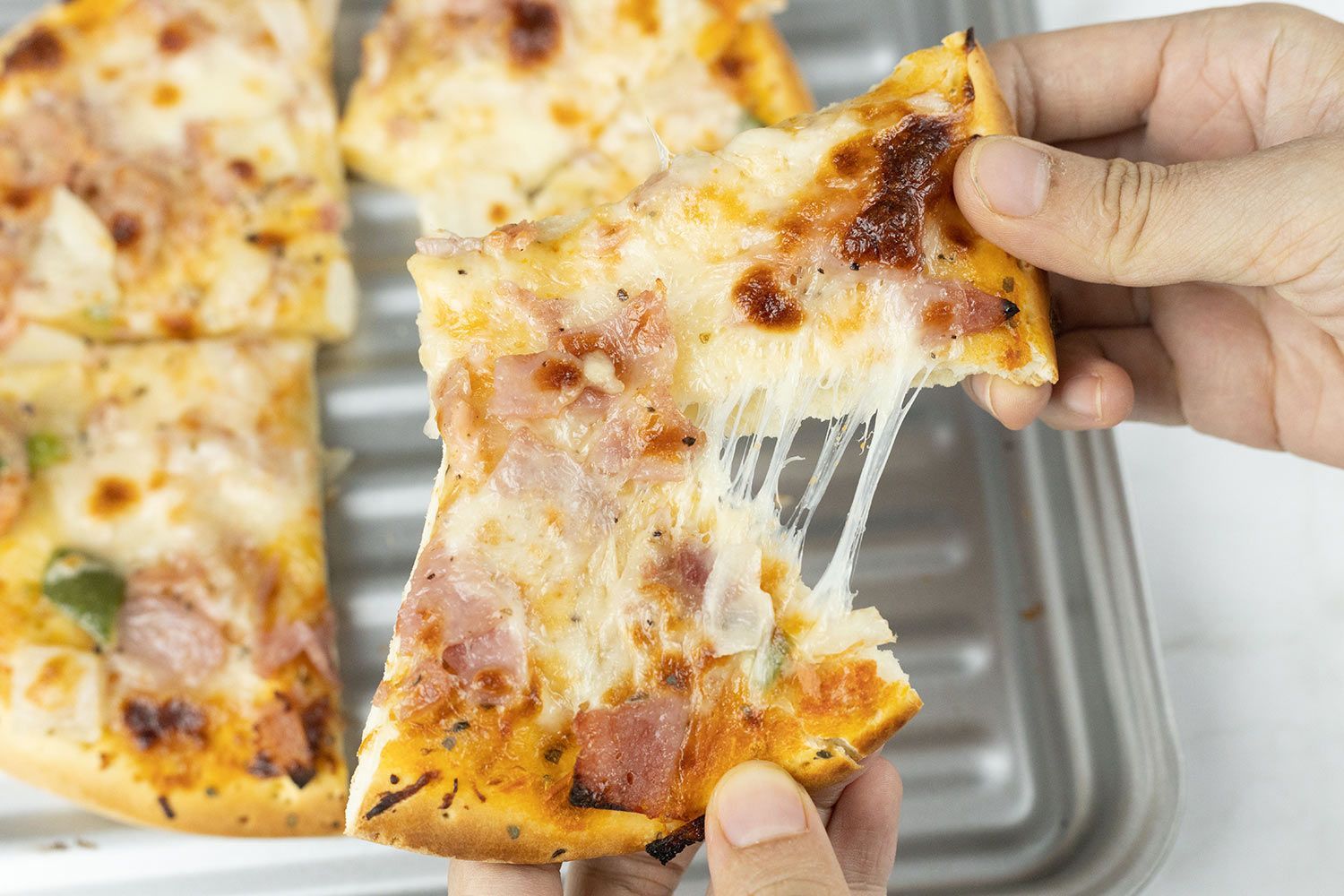
- 8/10: 80% even, slightly caramelized meat; Partially melted cheese
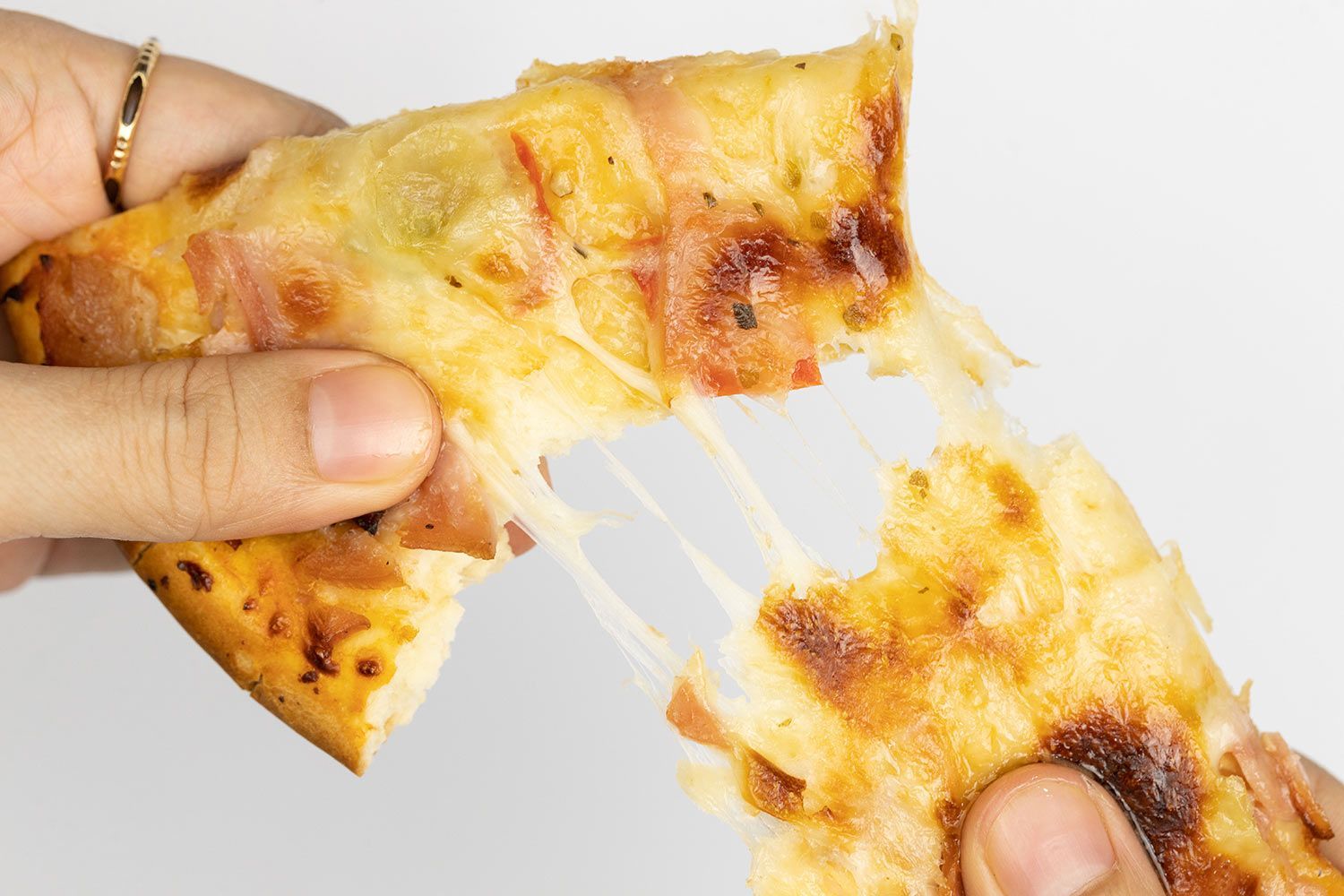
- 7/10: Cooked meat with little caramelization; slightly melted cheese

- 6/10: Cooked meat with no caramelization; Unmelted cheese

- 5/10: Almost no color; Too many burnt spots
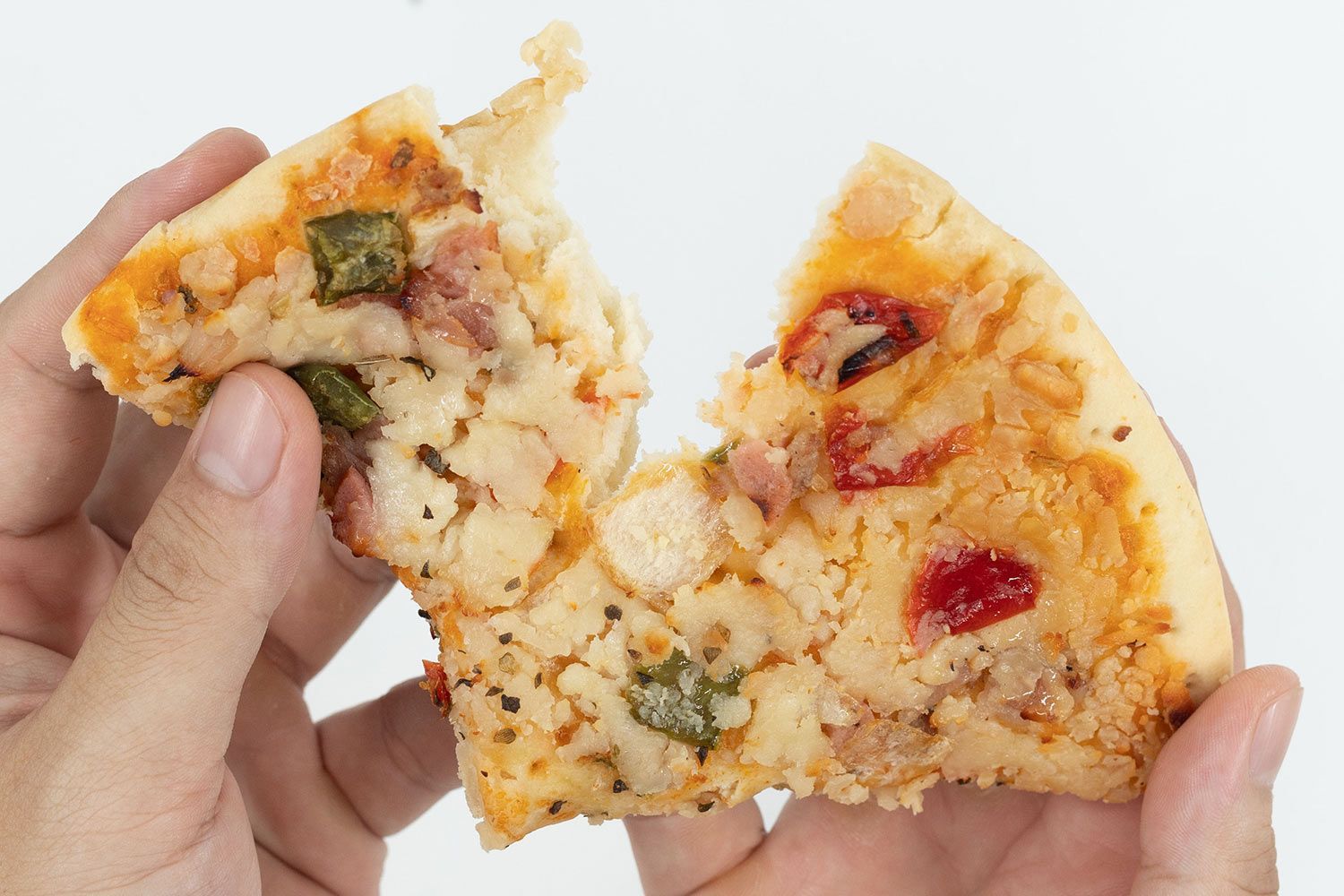
- 0/10: Undercooked; No color; Burnt
Taste Test

Deliciousness is a subjective yet important criterion for judging any food including pizza. One professional chef and three foodies make up our panel of judges, which ensures a variety of opinions. With years of experience and many professional awards under her belt, Tuyet Pham, our head chef, decides our scoring table.
Nonetheless, there are still some aspects that can help us explain our assessment.
- If you cook your pizza for longer than necessary, it could end up burnt and dry. A shorter time, on the other hand, may result in uneven color and a lack of crispiness.
- If you cook your pizza at a higher temperature than necessary, you could burn but still undercook it. A lower temperature, on the other hand, may result in a lack of color and crispiness.
- If the pizza is too burnt, it will most likely have an unappetizing bitter taste.
